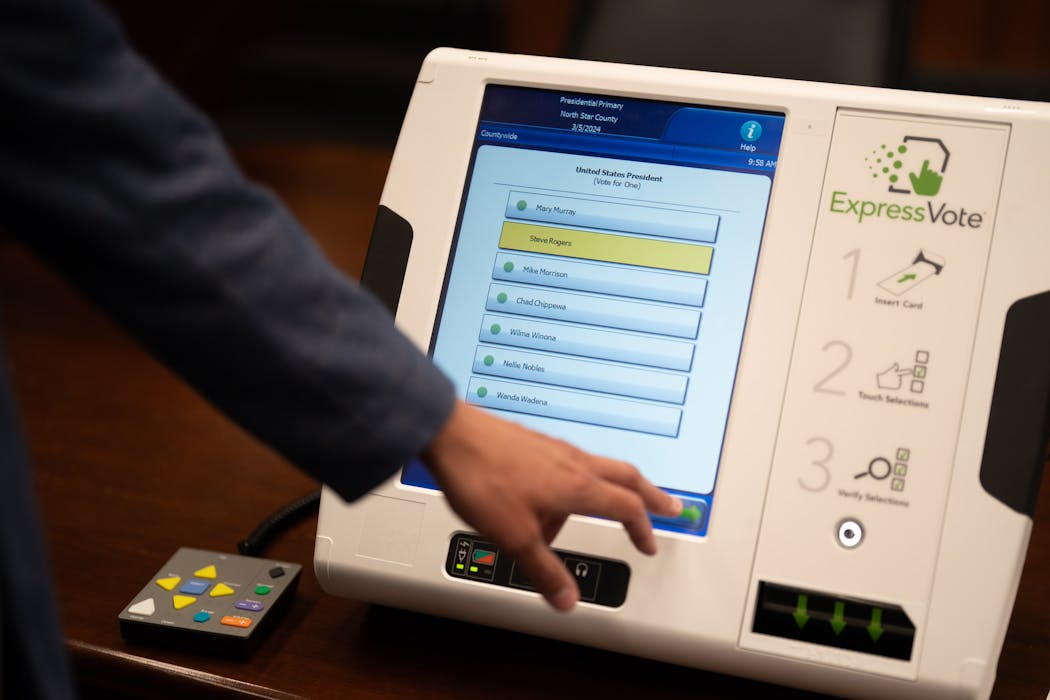The security of Minnesota's voting process was under scrutiny in a spacious basement hearing room in the Capitol complex Tuesday.
In an open-door session, election officials from Secretary of State Steve Simon's office put new voting machines to the test. If approved, cities and counties could purchase the devices for upcoming elections.
"They test it, they try to trick it," Simon said to describe the process of assessing the machines.
Simon's office doesn't purchase the machines; individual cities and counties make those decisions. But Simon's office provides them with a menu of certified equipment. "To those who have suspicions about elections, we hope that this will inspire confidence," he said.
The secretary of state noted that not only is the certification process a public one, it's advertised in advance and subject to Minnesota open meetings laws.
Under review this week in Room 10 of the State Office Building in St. Paul is a new assisted-voting device from Omaha-based Election Systems & Software (ES&S).
The device allows voters to mark ballots using a touch screen. The machines can also read text aloud to voters.
Once a voter makes selections, the machine produces a printed ballot less than half the width of a standard fill-in-the-oval ballot. That slimmer ballot is then fed into a tabulation machine.
Allowing skinnier ballots was one of many extensive election-law changes approved by the DFL-controlled Legislature in 2023.
Before they were done testing the new machines, elections staff needed to run a general election, primary and presidential primary. They tested the partisan offices, the nonpartisan and the ballot questions.
Elections director David Maeda, deputy director Paul Linnell and state program administrator Brad Anderson were among staff wielding spreadsheets, printouts and tabulations. Despite the public nature of the session, no one was present besides staff and Election Systems & Software employees.
Linnell noted that the certification tests are one of many for the machines. "There's quite a few bars that need to get cleared before it gets to this stage," Linnell said.
First the federal government must test and approve the devices, then the state. If they receive state approval and are purchased by counties and cities, the machines must be tested two weeks before elections.
"Our bottom line is: Is the thing accurate? Is it secure? Is it accessible? And then and only then is it certified for use," Simon said.
The work is routine for the office but elections nationwide have been under the microscope because of unfounded claims of widespread election fraud pushed by former President Donald Trump and his supporters. Simon's office is attempting to counter that false narrative by highlighting the required transparency of the tests.
"It's just one of those things leading up to 2024 that can help people discover the checks and balances and backstops built into the system," Simon said of the work.
In about a month, the test crew will present their findings to Simon along with a recommendation on whether to approve the new machines and a certificate for him to sign if the machines pass muster.
Arizona judge rejects GOP wording for voters' abortion ballot initiative pamphlet
FBI says Trump was indeed struck by bullet during assassination attempt




